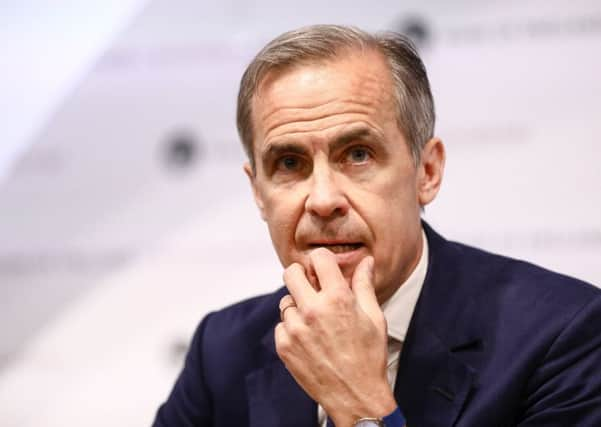John McLellan: SNP-led council strangely quiet about indyref economics


Established in the wake of the Brexit vote under the chairmanship of public relations man and ex-SNP MSP Andrew Wilson, the 14-strong team is dominated by senior SNP politicians and independence-supporting academics and their study will aim to show how Scotland can thrive after independence.
Being a cut-me-and-I-bleed-amber Motherwell fan, Wilson is a born optimist who has long banged the drum for the business opportunities of independence, touring Scottish boardrooms 15 years ago with fellow commission member and former SNP enterprise minister Jim Mather.
Advertisement
Hide AdAdvertisement
Hide AdThe Mather-Wilson roadshow evangelised high growth and how a low-tax approach could out-gun the rest of the UK and send the Scottish economy into the stratosphere. Now the SNP’s battle to permanently replace the Labour Party is being fought much further to the left, early leaks suggest their arguments focus on simplified rather than low taxes.
Apparently running to 354 pages, it should be a heftier piece of work than the economy and business sections of the 670-page ‘Scotland’s Future’ white paper of 2013, which ran to only 160 pages at most, including appendices.
According to then First Minister Alex Salmond, Scotland’s Future was “the most comprehensive blueprint for an independent country ever published”, but defeat in 2014 was blamed on the failure to communicate a clear and compelling message about the economy and confusion over currency.
Now Wilson says his paper is “the most substantial work on Scotland’s economic future ever undertaken” which sounds familiar. It’s said to support a new Scottish currency, which was always the only way through the problem of the euro’s unpopularity and the UK Treasury’s rejection of currency sharing, which in any case would have meant economic independence in name only, as SNP veteran Jim Sillars repeatedly argued.
Advertisement
Hide AdAdvertisement
Hide AdMost people understood if the Bank of England retained control then the Salmond mantra of “it’s our pound and we’re keeping it” wasn’t worth two ten-shilling notes but the problem remains there is no greater uncertainty for voters than a brand new currency.
Of all the claims of material differences in political circumstances since 2014, the currency question is unchanged and Bank of England Governor Mark Carney re-emphasised this week that while sharing a currency was economically possible, as it always was, to be politically workable would require political union.
Meanwhile, Edinburgh council is still wrestling with its economy strategy document and amidst the positive talk of opportunities its first draft came with warnings about the uncertainty that Brexit had brought and how difficult it was for the city to plan for the future when so much was unknown.
There was not a line about a second independence referendum, but for argument’s sake let’s assume the document reflected the diminishing likelihood of a second independence vote because First Minister Nicola Sturgeon appeared to be going cold on the idea.
Advertisement
Hide AdAdvertisement
Hide AdBut now the independence gloves are coming off and by coincidence the Edinburgh strategy is being re-drafted by the new economy convenor Kate Campbell. With the campaign set to be kick-started by the Growth Commission, will the new council document warn about the uncertainty another independence referendum will bring? Will it recognise the impact a switch to the groat, merk or whatever it would be called might have on financial services in particular and the Scottish economy as a whole?
With the SNP only running the council administration with the acquiescence of Labour, I expect the pair of them will just try to quietly ignore the fact that the biggest threat to an Edinburgh economy which still relies heavily on financial services and overwhelmingly on trade with the rest of the UK will now come from within.
Lib Dem swings school refurbishment vote against Tory-Green alliance
Maybe the Lib Dems are happy to concentrate on defending their West Edinburgh redoubt, but by siding with SNP-Labour to delay the decision on the future of Currie High and the Wester Hailes Education Centre, they haven’t earned their party many new friends in Pentlands.
Advertisement
Hide AdAdvertisement
Hide AdCouncillors had to choose one of three options, the first of which was to refurbish the schools on their current sites, the preference of most parents. The three Conservatives and two Greens wanted to press on while the five administration councillors plus Lib Dem Cllr Louise Young backed further consultation.
Branson’s right about tourism in Edinburgh
Presumably not aboard a soon-to-be-returned Virgin train, Sir Richard Branson was in town to see work on his new Virgin Hotel on Victoria Street and has entered the tourism tax debate by arguing that any revenue should be invested in the tourism industry and not disappear into the council pot. Quite so, and he also had a point that Edinburgh’s visitor numbers were manageable when a sunny High Street at the end of May was hardly overwhelmed.
